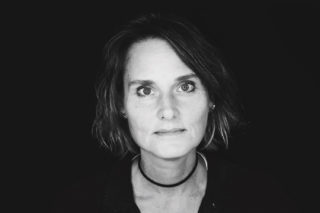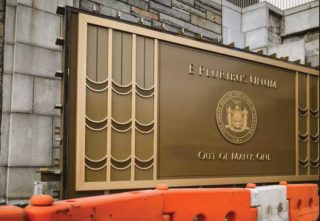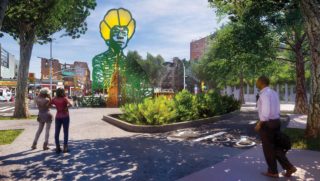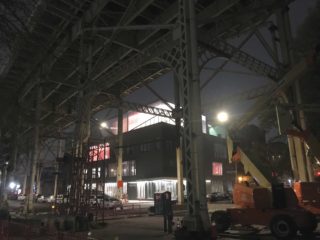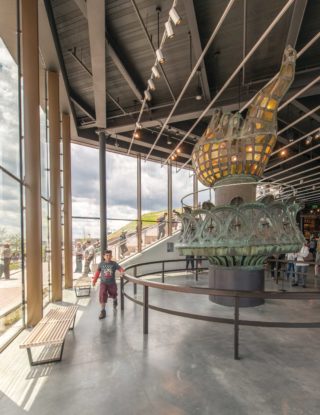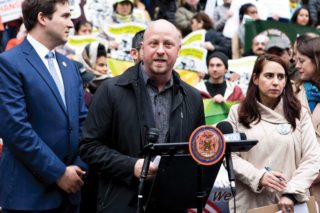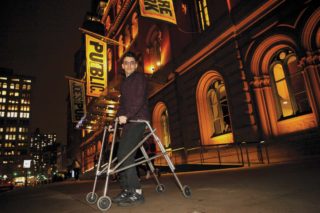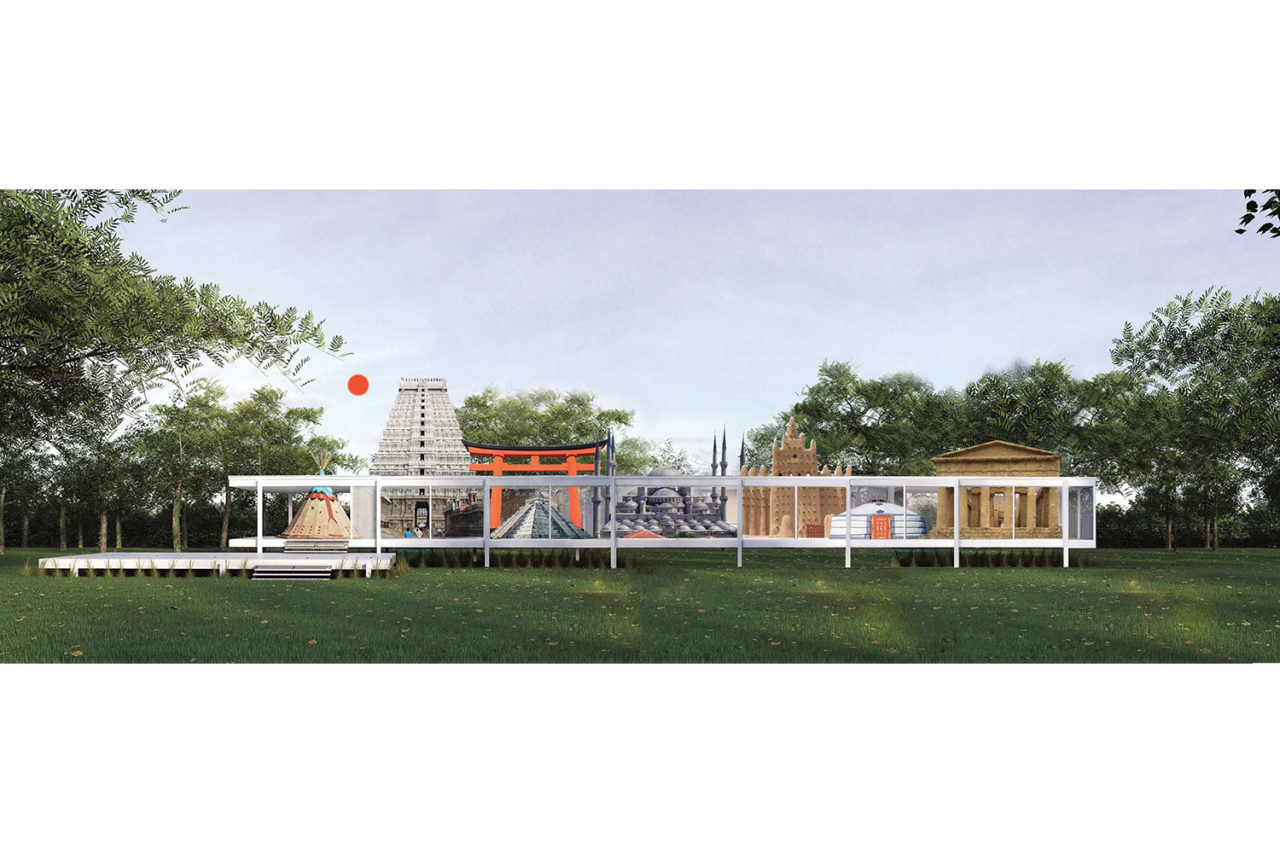
Twelve years ago, our architecture firm was working with Columbia University on a new multidisciplinary Center for Student Advising when we were asked an unusual question by the dean of the college: “A hundred years ago, everyone who attended this university was part of the same club, having gone to similar prep schools and looking forward to a future in elite society. Now our students come from all over the world, from radically different cultures and economic classes. We are trying to build a sense of community based on this diversity. Can you help us create spaces that address this need?”
Since then, several other institutional clients have raised similar questions. During an interview for a museum project, we were asked, “How would you reflect the diverse community of Brooklyn?” And while working on the design for a reproductive health care facility in Queens, a surprising number of client meetings revolved around making the spaces welcoming to people who spoke over 100 languages and had widely diverse traditions.
For many of us living in large, culturally diverse cities, increased multiculturalism is seen as something to celebrate. It creates richer urban experiences, greater cultural innovation, and economic growth. Architects working in diverse cities should recognize that this is an important and little discussed issue that should influence the design of public and institutional buildings and spaces. Incorporating the needs of diverse cultures will help us create architecture and cities of the future that are truly welcoming, cosmopolitan, and equitable.
America and many other developed nations in the world have been experiencing a rapid and unprecedented increase in population diversity. The current political situation in the U.S., Brexit, and nationalist trends in Europe and even India make it clear that multiculturalism is one of the central issues of our time. Many countries are bitterly divided on whether to accept a more diverse society or fight to maintain the dominance of a single ethnic or cultural identity. Stunning increases in population diversity during the past 20 years might make this issue more pressing in architecture, especially in America’s larger cities. The United States is now a more racially and ethnically diverse country than ever before. According to a report by the Congressional Research Service, the 2017 population of white people, non- Hispanic or Latino, in the U.S. was 60.7%, and by the mid-2040s, that population will be just less than 50%. Each of these ethnic groups has its own cultural and even architectural traditions.
Major institutions are seeing this increased diversification in their communities. The student body of Columbia University is now approximately 60% nonwhite. Planned Parenthood records show that during the 1970s, its typical patient was young, white, middle class, and single. But today’s statistics tell a different story. For example, within the first year of opening its new facility in Queens in 2015, which was designed by our office, patients from more than 127 different countries of origin were served.
For centuries, architecture has been an expression of the values and traditions of the dominant culture, ethnicity, religion, or even corporations within societies. If a country or society expanded through conquest or trade, architecture was often used as a tool to impose its values on others. Examples of this can be seen worldwide from the Roman Empire, which built Roman-style buildings from Britain to the Middle East, to Mughal architecture in India, which transplanted a Persian style of architecture into a conquered continent.
Imperial or colonial powers sometimes incorporated local architectural motifs and forms into civic architecture as a means of placating the conquered or dominated local communities. A fusion of grand neoclassical British Empire style with elements of Indian Mughal architecture was masterfully accomplished by Edwin Lutyens in Delhi. More recently, the Hilton Hotel in Istanbul, designed by SOM in 1951, incorporates Middle Eastern motifs in the interiors of an International Style building. This gesture puts a kind face on the overwhelming power of post-World War ll American capitalism locked in a propaganda cold war with the Soviet Union.
Of course, there are many instances of an architectural mash-up strategy resulting from two cultures borrowing from each other, or architects just falling in love with foreign cultures. Venetian Gothic architecture of the 14th and 15th centuries is a magnificent example of the former. Five hundred years later, some of the most acclaimed modernist architects experimented with combining a local vernacular with Modernism. Aspects of Le Corbusier’s work in Chandigarh was inspired by Indian culture and urbanism. Frank Lloyd Wright was truly a “cultural appropriator,” freely borrowing from Japanese, Mayan, and even American Indian architecture. Kenzo Tange masterfully melded modernist architecture with traditional Japanese forms in his Olympic Stadiums of 1961. More recently, architects following a regional modernist or critical regionalism approach have mixed classic Modernism with local vernacular architecture for environmental, aesthetic, and cultural conservation reasons.
Yet these are all examples of a dominant style that a majority of people in society agree upon, accommodating one local culture that is assumed to be static. But is this relevant in global cities that are increasingly multicultural and consist of neighborhoods that are in constant change? Furthermore, in today’s global cultural supermarket, people are rapidly influenced by art, media, and products from the entire world, unbound by place or local tradition.
In the context of rising nationalism and populism in the West, emphasizing local place and cultural identity in a globalized world can also be a double-edged sword: it can be seen as an antidote to the dislocation and destruction of local culture, or can also be taken as a way of restoring “blood and soil.” Consider the possibilities when minority groups, rather than being compelled to assimilate and give up their cultural traditions, have the opportunity to have a voice at the table. The National Museum of African American History and Culture in Washington, D.C., makes a highly visible statement about the importance of non-Western cultural traditions within our county on the Washington Mall, a place dominated by buildings in either neoclassical or various modernist styles.
Creating representative and relevant spaces for a multicultural group of users is a challenging problem that is little discussed within architectural circles. One can deal with it through the creation of more welcoming public spaces, similar to squares and streets that are universally understood as places of community, social interaction, collaboration, or sometimes protest. Including spaces like these, even in interiors, creates places of inclusion and democracy, where people can gather and experience their common humanity. Another approach is to imply diversity through more abstract gestures, such as color and the use of multiple languages. For our Planned Parenthood Project in Queens, a clean, abstract, light-filled aesthetic is punctuated with a rigorous color system that act as a non-verbal orientation device and expresses the diversity of the surrounding community. Room signage mainly uses colors or numbers. The word “Welcome” is displayed in multiple languages immediately upon entry.
Yet in terms of architectural style, it seems that the current default approach is to avoid the question of representation and relevance altogether, and employ a neutral, minimal, and technically advanced architecture without references to any cultural tradition. The thinking seems to be that if one is to respect the local, the design should respond only to the physical aspects of the site and local climate.
Incorporating references to multiple cultures is daunting and risks being seen as kitsch. Yet, there are successful examples, such as BIG’s Superkilen park in the diverse Nørrebro neighborhood of Copenhagen, which opened in 2012. Public participation was the basis for the design, which incorporated an array of objects and artifacts that are critical to the idea of “park” in the home region of the neighborhood’s residents, including fountains, speakers playing music, and landscapes for skateboarding. We can also take a cue from artists who have borrowed from many cultures to create new forms of expression. Isamu Noguchi freely incorporated ideas from pre-Columbian sculpture to Hindu architectural astronomical monuments. The recent work of musician Rhiannon Gibbens is a global mix, combining even early African-American banjo with Persian Sufi music.
The growing demographic and cultural diversity of our time, especially in large American cities, is a powerful reason for architects to start responding to a new world of users. Making the issue of multiculturalism central to our concerns as designers will create places that welcome diverse populations and give democracy a chance to thrive.








